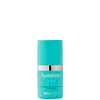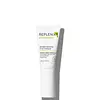What's inside
What's inside
 Key Ingredients
Key Ingredients

 Benefits
Benefits

 Concerns
Concerns

 Ingredients Side-by-side
Ingredients Side-by-side

Water
Skin ConditioningCaprylic/Capric Triglyceride
MaskingC12-20 Acid PEG-8 Ester
EmulsifyingGlycerin
HumectantButylene Glycol
HumectantCetyl Alcohol
EmollientPEG-8
HumectantBisabolol
MaskingCaffeine
Skin ConditioningTetrahexyldecyl Ascorbate
AntioxidantFagus Sylvatica Bud Extract
TonicLecithin
EmollientCutaneous Lysate
MoisturisingTetrapeptide-21
Skin ConditioningSodium Hyaluronate
HumectantGlycyrrhetinic Acid
Skin ConditioningTocopherol
AntioxidantCitric Acid
BufferingCapryloyl Carnosine
Skin ConditioningAscorbyl Palmitate
AntioxidantTocotrienols
Skin ConditioningElaeis Guineensis Oil
EmollientPalmitoyl Tripeptide-1 Acetate
Skin ConditioningAscorbic Acid
AntioxidantBenzoic Acid
MaskingSqualene
EmollientPhytosterols
Skin ConditioningSodium Citrate
BufferingPotassium Cetyl Phosphate
EmulsifyingPotassium Sorbate
PreservativeCaprylyl Glycol
EmollientCarbomer
Emulsion StabilisingHexylene Glycol
EmulsifyingSaccharide Isomerate
HumectantSodium Polyacrylate
AbsorbentSodium Hydroxide
BufferingDisodium EDTA
Phenoxyethanol
PreservativeBenzyl Alcohol
PerfumingWater, Caprylic/Capric Triglyceride, C12-20 Acid PEG-8 Ester, Glycerin, Butylene Glycol, Cetyl Alcohol, PEG-8, Bisabolol, Caffeine, Tetrahexyldecyl Ascorbate, Fagus Sylvatica Bud Extract, Lecithin, Cutaneous Lysate, Tetrapeptide-21, Sodium Hyaluronate, Glycyrrhetinic Acid, Tocopherol, Citric Acid, Capryloyl Carnosine, Ascorbyl Palmitate, Tocotrienols, Elaeis Guineensis Oil, Palmitoyl Tripeptide-1 Acetate, Ascorbic Acid, Benzoic Acid, Squalene, Phytosterols, Sodium Citrate, Potassium Cetyl Phosphate, Potassium Sorbate, Caprylyl Glycol, Carbomer, Hexylene Glycol, Saccharide Isomerate, Sodium Polyacrylate, Sodium Hydroxide, Disodium EDTA, Phenoxyethanol, Benzyl Alcohol
Water
Skin ConditioningCyclomethicone
EmollientButylene Glycol
HumectantCaprylic/Capric Triglyceride
MaskingGlycerin
HumectantNiacinamide
SmoothingSodium PCA
HumectantSodium Hyaluronate
HumectantHydrolyzed Sodium Hyaluronate
Skin ConditioningCaffeine
Skin ConditioningGlyceryl Stearate
EmollientCeramide Ng
Skin ConditioningPhospholipids
Skin ConditioningCamellia Sinensis Polyphenols
AntioxidantAscorbic Acid
AntioxidantTocopheryl Acetate
AntioxidantRetinol
Skin ConditioningArnica Montana Extract
Skin ConditioningPhytonadione Epoxide
AstringentTetrahexyldecyl Ascorbate
AntioxidantPolyacrylamide
C13-14 Isoparaffin
EmollientPhyllanthus Emblica Fruit Extract
HumectantN-Hydroxysuccinimide
Skin ConditioningChrysin
Skin ConditioningSteareth-20
CleansingPalmitoyl Oligopeptide
CleansingPalmitoyl Tetrapeptide-7
Skin ConditioningHesperidin Methyl Chalcone
AntioxidantDipeptide-2
Skin ConditioningAlbizia Julibrissin Bark Extract
MaskingDarutoside
Skin ConditioningTribehenin
EmollientPolysorbate 20
EmulsifyingHydrogenated Polybutene
Butylated Pvp
PEG-10 Rapeseed Sterol
CleansingPalmitoyl Hexapeptide-12
Skin ConditioningPalmitoyl Pentapeptide-4
Skin ConditioningCarbomer
Emulsion StabilisingCetyl Alcohol
EmollientBehenyl Alcohol
EmollientLaureth-7
EmulsifyingPEG-100 Stearate
Caprylyl Glycol
EmollientPhenoxyethanol
PreservativeSorbic Acid
PreservativeTitanium Dioxide
Cosmetic ColorantWater, Cyclomethicone, Butylene Glycol, Caprylic/Capric Triglyceride, Glycerin, Niacinamide, Sodium PCA, Sodium Hyaluronate, Hydrolyzed Sodium Hyaluronate, Caffeine, Glyceryl Stearate, Ceramide Ng, Phospholipids, Camellia Sinensis Polyphenols, Ascorbic Acid, Tocopheryl Acetate, Retinol, Arnica Montana Extract, Phytonadione Epoxide, Tetrahexyldecyl Ascorbate, Polyacrylamide, C13-14 Isoparaffin, Phyllanthus Emblica Fruit Extract, N-Hydroxysuccinimide, Chrysin, Steareth-20, Palmitoyl Oligopeptide, Palmitoyl Tetrapeptide-7, Hesperidin Methyl Chalcone, Dipeptide-2, Albizia Julibrissin Bark Extract, Darutoside, Tribehenin, Polysorbate 20, Hydrogenated Polybutene, Butylated Pvp, PEG-10 Rapeseed Sterol, Palmitoyl Hexapeptide-12, Palmitoyl Pentapeptide-4, Carbomer, Cetyl Alcohol, Behenyl Alcohol, Laureth-7, PEG-100 Stearate, Caprylyl Glycol, Phenoxyethanol, Sorbic Acid, Titanium Dioxide
 Reviews
Reviews

Ingredients Explained
These ingredients are found in both products.
Ingredients higher up in an ingredient list are typically present in a larger amount.
Ascorbic Acid is is pure Vitamin C. This form makes up the largest amount of vitamin C found naturally in our skin.
Not only is vitamin C great for your overall health and immune system, it also has plenty of benefits on your skin.
Vitamin C is best used for brightening skin. It improves dark spots, acne scars, and hyperpigmentation. This is because it blocks the process of skin darkening when exposed to UV.
Remember: Vitamin C should not replace sunscreen!
Your skin uses vitamin C to build collagen. Collagen is one key component in having a strong skin barrier and plump skin. Vitamin C also plays a role in regulating collagen, thus making it effective in improving wrinkles and fine lines.
Ascorbic acid shows potent antioxidant activity. As an antioxidant, it helps fight free-radicals. Free-radicals are molecules that may damage your skin cells. These antioxidants also protect skin against UV damage.
The best formulations include Vitamin E and/or ferulic acid. These two ingredients help stabilize and provide a boost in the benefits of ascorbic acid. This is because ascorbic acid becomes unstable when exposed to UV and air. In fact, you can tell your ascorbic acid has oxidized when it turns an orange-yellow color.
Ascorbic acid is generally compatible with other ingredients. However, using ascorbic acid with other active ingredients might cause irritation. Two ingredients: copper ions and benzoyl peroxide, will inactivate ascorbic acid completely.
Read more about other types of Vitamin C:
Foods rich with vitamin C include oranges, strawberries, broccoli, bell peppers, and more. When consuming Vitamin C, your skin receives a portion of the nutrients.
Learn more about Ascorbic AcidButylene Glycol (or BG) is used within cosmetic products for a few different reasons:
Overall, Butylene Glycol is a safe and well-rounded ingredient that works well with other ingredients.
Though this ingredient works well with most skin types, some people with sensitive skin may experience a reaction such as allergic rashes, closed comedones, or itchiness.
Learn more about Butylene GlycolCaffeine is most associated with coffee, tea, and cacao. In skincare, it helps with calming inflammation and is rich in antioxidants.
While caffeine is used to treat cellulite and and dark circles, further studies are needed to prove this. It has been believed to help with these skin conditions due to its ability to dilate blood vessels and increase blood flow.
Some studies are looking into caffeine's ability to protect against UV rays.
Learn more about CaffeineThis ingredient is an emollient, solvent, and texture enhancer. It is considered a skin-softener by helping the skin prevent moisture loss.
It helps thicken a product's formula and makes it easier to spread by dissolving clumping compounds.
Caprylic Triglyceride is made by combining glycerin with coconut oil, forming a clear liquid.
While there is an assumption Caprylic Triglyceride can clog pores due to it being derived from coconut oil, there is no research supporting this.
Learn more about Caprylic/Capric TriglycerideCaprylyl Glycol is a humectant and emollient, meaning it attracts and preserves moisture.
It is a common ingredient in many products, especially those designed to hydrate skin. The primary benefits are retaining moisture, skin softening, and promoting a healthy skin barrier.
Though Caprylyl Glycol is an alcohol derived from fatty acids, it is not the kind that can dry out skin.
This ingredient is also used as a preservative to extend the life of products. It has slight antimicrobial properties.
Learn more about Caprylyl GlycolCarbomer is a polymer of acrylic acid. Its main role is to create a gel consistency.
A high amount of carbomer can cause pilling or balling up of products. Don't worry, most products contain 1% or less of carbomer.
Cetyl Alcohol is a fatty alcohol. Fatty Alcohols are most often used as an emollient or to thicken a product.
Its main roles are:
Though it has "alcohol" in the name, it is not related to denatured alcohol or ethyl alcohol.
The FDA allows products labeled "alcohol-free" to have fatty alcohols.
Learn more about Cetyl AlcoholGlycerin is already naturally found in your skin. It helps moisturize and protect your skin.
A study from 2016 found glycerin to be more effective as a humectant than AHAs and hyaluronic acid.
As a humectant, it helps the skin stay hydrated by pulling moisture to your skin. The low molecular weight of glycerin allows it to pull moisture into the deeper layers of your skin.
Hydrated skin improves your skin barrier; Your skin barrier helps protect against irritants and bacteria.
Glycerin has also been found to have antimicrobial and antiviral properties. Due to these properties, glycerin is often used in wound and burn treatments.
In cosmetics, glycerin is usually derived from plants such as soybean or palm. However, it can also be sourced from animals, such as tallow or animal fat.
This ingredient is organic, colorless, odorless, and non-toxic.
Glycerin is the name for this ingredient in American English. British English uses Glycerol/Glycerine.
Learn more about GlycerinPhenoxyethanol is a preservative that has germicide, antimicrobial, and aromatic properties. Studies show that phenoxyethanol can prevent microbial growth. By itself, it has a scent that is similar to that of a rose.
It's often used in formulations along with Caprylyl Glycol to preserve the shelf life of products.
Sodium Hyaluronate is hyaluronic acid's salt form. It is commonly derived from the sodium salt of hyaluronic acid.
Like hyaluronic acid, it is great at holding water and acts as a humectant. This makes it a great skin hydrating ingredient.
Sodium Hyaluronate is naturally occurring in our bodies and is mostly found in eye fluid and joints.
These are some other common types of Hyaluronic Acid:
Learn more about Sodium HyaluronateTetrahexyldecyl Ascorbate (THD) is a stable and oil-soluble form of Vitamin C.
THD is special in that it has the ability to travel deeper into skin than traditional ascorbic acid while maintaining the same skin benefits (double win!).
Because it’s oil-soluble, THD dives deep into your skin’s fatty layers (think ceramides and cholesterol) to fight off the kind of free radicals that mess with your skin barrier. This makes it a great pair with water-based vitamin C (ascorbic acid) that mainly works on the surface.
Even at just 0.1%, THD is already showing great antioxidant activity. When used up to 2%, it helps keep your skin happy and calm, especially when it’s stressed from pollution or sun.
Want to fade dark spots or tackle hyperpigmentation? You’ll want 5% or more. Pairing it with brightening buddies like niacinamide or licorice root gives even better results. One study even used 30% THD with other brighteners and saw real results on stubborn discoloration, even in melasma-prone skin.
A note on THD: It’s has a slightly silky, oily texture and usually shows up colorless or pale yellow (though the exact shade can vary by supplier).
While you can sneak it into water-based formulas, it really shines when paired with silicones or oils, which help your skin soak it up better.
THD is pretty stable, but it’s still vulnerable to degradation like ascorbic acid. Too much light or heat (above 113°F / 45°C) can break it down over time. Go for dark and opaque packaging that keeps it safe and shady!
Read more about other types of Vitamin C:
Learn more about Tetrahexyldecyl AscorbateWater. It's the most common cosmetic ingredient of all. You'll usually see it at the top of ingredient lists, meaning that it makes up the largest part of the product.
So why is it so popular? Water most often acts as a solvent - this means that it helps dissolve other ingredients into the formulation.
You'll also recognize water as that liquid we all need to stay alive. If you see this, drink a glass of water. Stay hydrated!
Learn more about Water